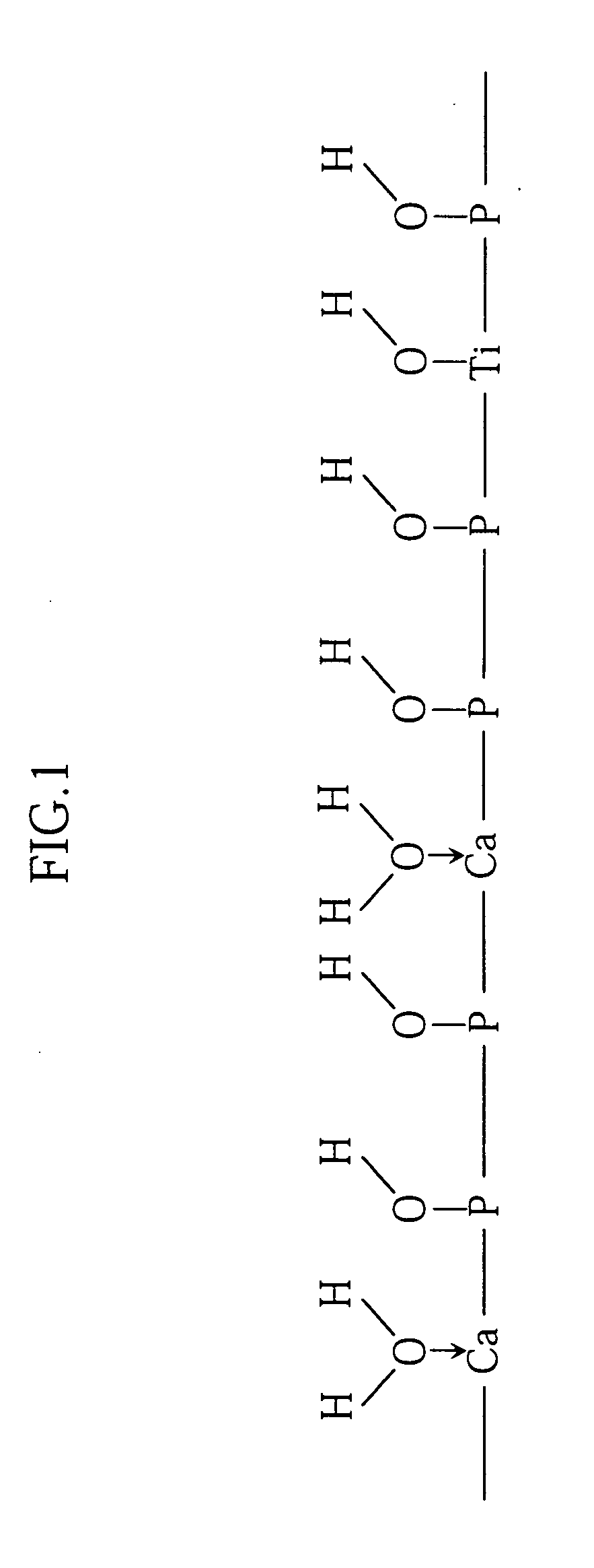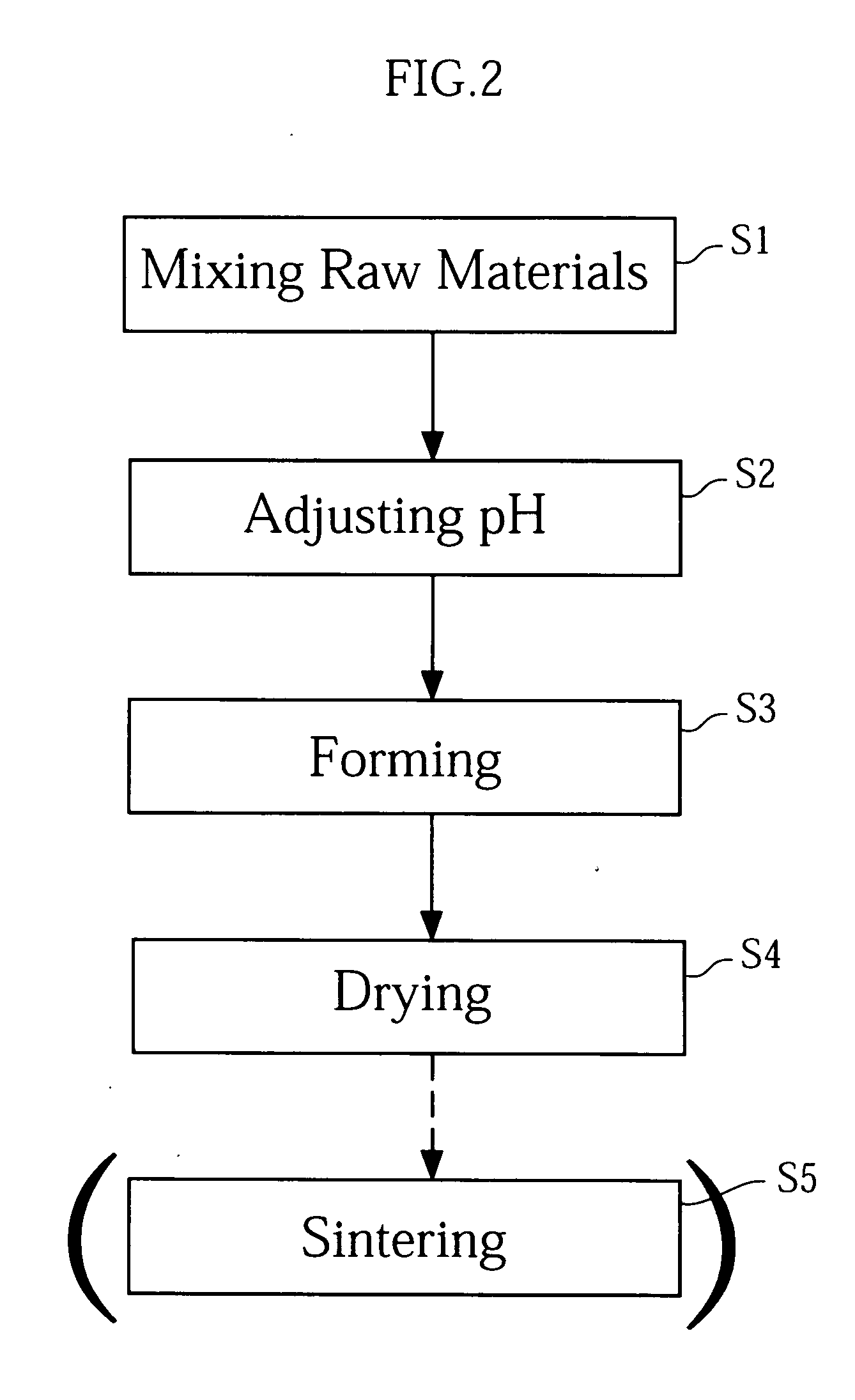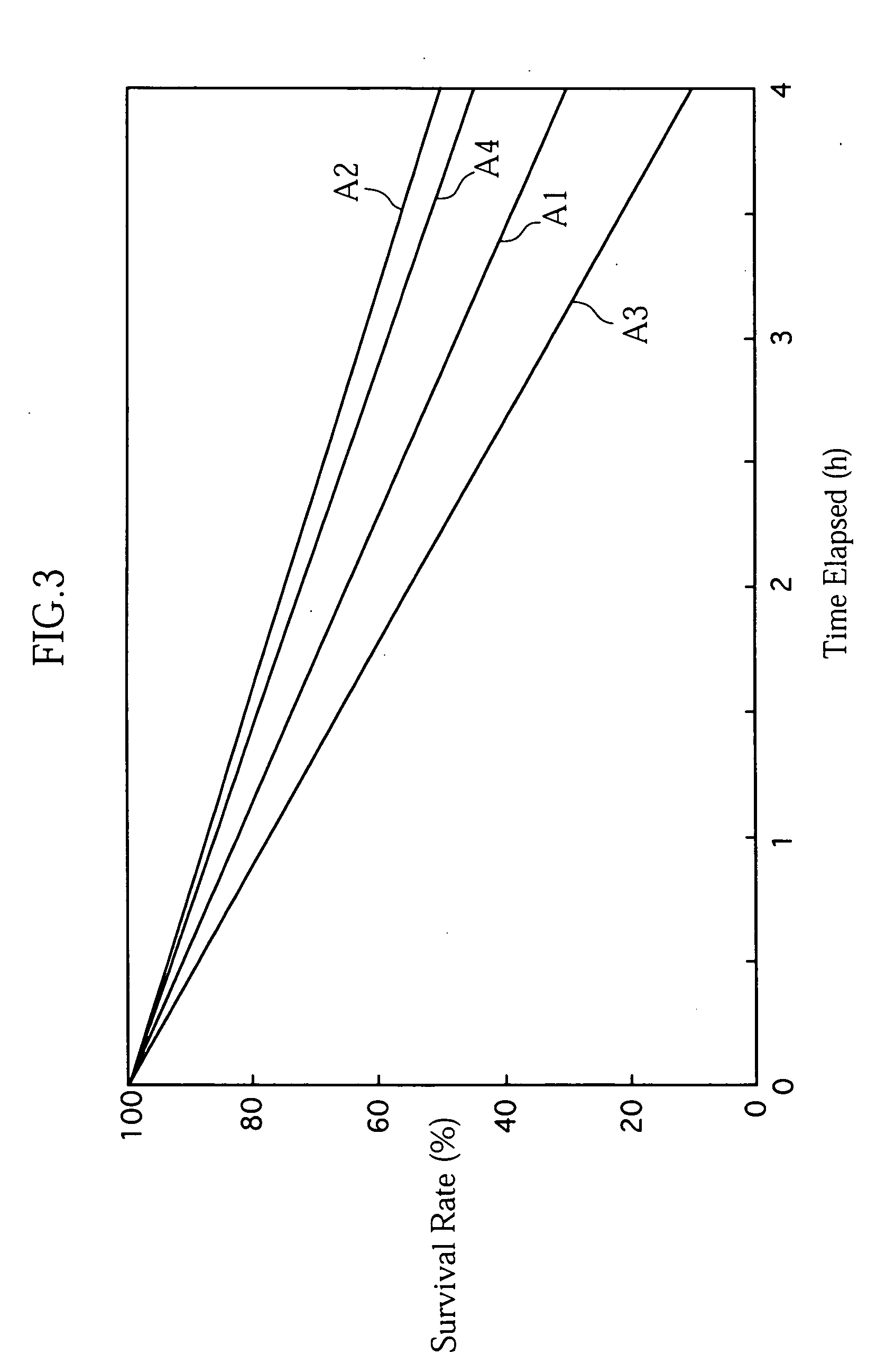Antibacterial, antifouling paint for construction materials and construction materials coated therewith
a technology of antibacterial paint and construction materials, applied in the direction of biocide, biocides, paints with biocides, etc., can solve the problems of poor antibacterial effect, easy contamination of coatings, and worsening of problems, and achieve good antibacterial effects
- Summary
- Abstract
- Description
- Claims
- Application Information
AI Technical Summary
Benefits of technology
Problems solved by technology
Method used
Image
Examples
example 1
[0046]
[0047] In the present Example, Ti—Ca HAP was made as the metal-modified apatite. Specifically, a liter of decarbonated pure water was prepared. To this pure water, calcium nitrate, titanium sulfide and phosphoric acid were added and mixed in nitrogen atmosphere. The concentration of calcium nitrate was adjusted to 0.09 mol / L, the concentration of titanium sulfite was adjusted to 0.01 mol / L whereas the concentration of phosphorus acid was adjusted to 0.06 mol / L. Next, the pH of the raw material solution was adjusted to 9.0 by adding ammonia water of the 15 mol / L concentration. Next, the raw material solution was aged at 100° C. for six hours. Through these operations, the metal-modified apatite occurred and precipitated in the raw material solution, and the raw material solution became a suspension. The suspension was filtered, and the separated deposit was cleaned with five liters of pure water, and then dried in a dry oven at 70° C. for 12 hours, to obtain Ti—Ca HAP which has...
example 2
[0052] The same antibacterial, antifouling paint as in Example 1 was used, and the same method as in Example 1 was employed to form an antibacterial, antifouling coating on a glass plate which had a size of 50 mm×50 mm. Further, the same operation and counting methods as in Example 1 were applied, except that no ultraviolet radiation was made to the E. coli bacteria and the antibacterial, antifouling paint was kept in a dark place. Results were plotted in a graph A2 in FIG. 3, with the horizontal axis representing time and the vertical axis representing the survival rate of the E. coli bacteria.
example 3
[0053] The same Ti—Ca HAP powder as used in Example 1 was further sintered at 650° C. for 30 minutes. Then, using this Ti—Ca HAP powder, the same steps were followed to prepare an antibacterial, antifouling paint. Next, using this antibacterial, antifouling paint, the same method as in Example 1 was employed to form an antibacterial, antifouling coating on a glass plate which had a size of 50 mm×50 mm. Then, the same operation and counting methods as in Example 1 were applied. Results were plotted in a graph A3 in FIG. 3, with the horizontal axis representing time and the vertical axis representing the survival rate of the E. coli bacteria.
PUM
| Property | Measurement | Unit |
|---|---|---|
| Temperature | aaaaa | aaaaa |
| Percent by mole | aaaaa | aaaaa |
| Molar ratio | aaaaa | aaaaa |
Abstract
Description
Claims
Application Information
 Login to View More
Login to View More - R&D
- Intellectual Property
- Life Sciences
- Materials
- Tech Scout
- Unparalleled Data Quality
- Higher Quality Content
- 60% Fewer Hallucinations
Browse by: Latest US Patents, China's latest patents, Technical Efficacy Thesaurus, Application Domain, Technology Topic, Popular Technical Reports.
© 2025 PatSnap. All rights reserved.Legal|Privacy policy|Modern Slavery Act Transparency Statement|Sitemap|About US| Contact US: help@patsnap.com



